What has happened with my motorhomes?
One that got away
I believe that this maybe a Mercedes coach O 321 H. There is a similar image here and an article about the Mercedes coach O 321 H from the manufacturer entitled 'The world champion bus in the guise of the O 321 H'.
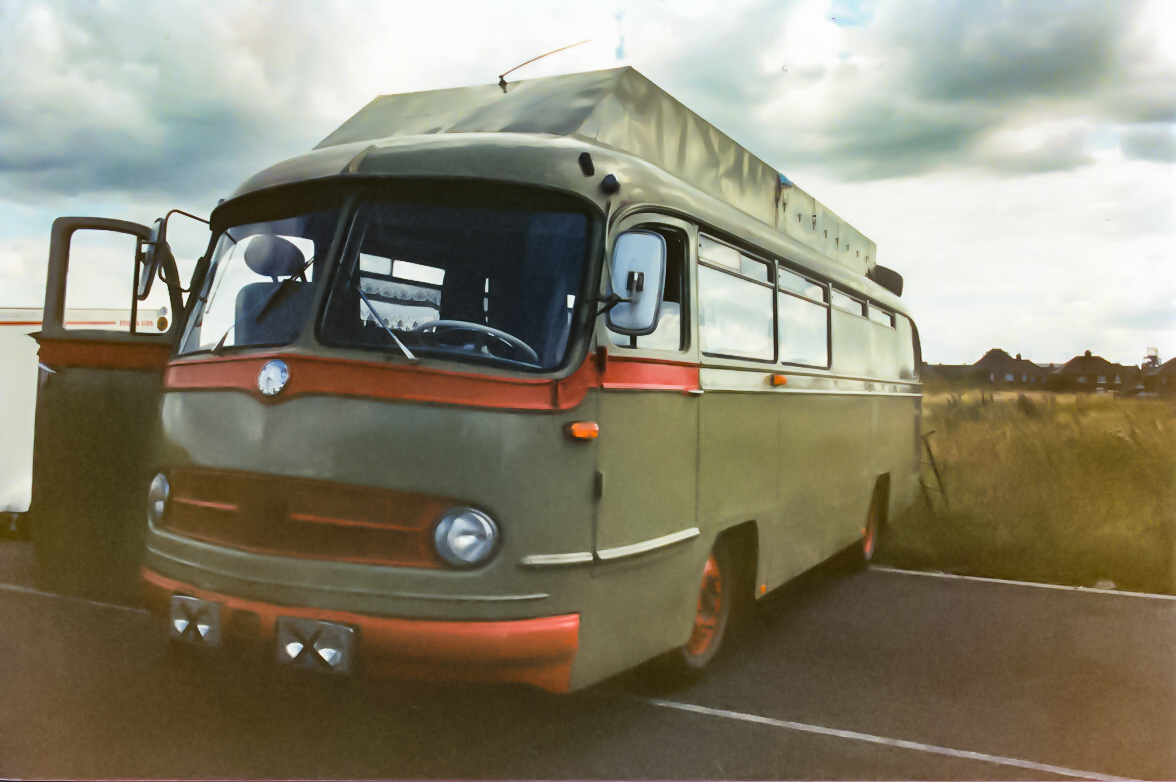
The O 321 H, a medium-sized forward-control bus with nine seat rows which impressed customers with a remarkably spacious luggage compartment beneath the floor of the passenger area. This was a result of the new self-supporting construction featuring a frame/floor assembly with a body firmly welded to it and serving also to support the structure.
Perhaps that is what lent it to being converted to a motorhome.
I had seen an advert for this bus converted to a motorhome and made an appointment to drive all the way to Cheshire to view it in the car park of an industrial unit. It was a long journey and took longer than I wanted. Photos as I left were of the refinery at night, just a couple of miles down the road. 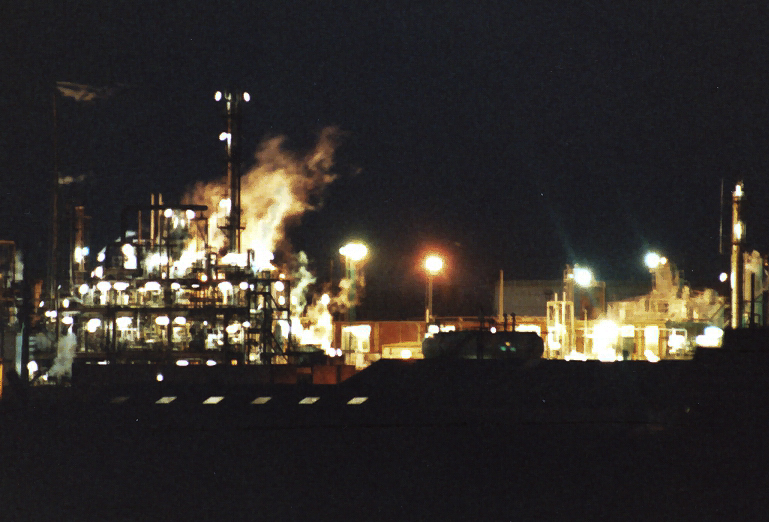
They were a lovely couple who had spent a lot of time and love converting this from a coach / bus to a well appointed comfortable motorhome. Perhaps that is why I stayed talking so long.
In the end I did not purchase this one. Not because it was left hand drive, as I knew that before setting off and it is not such an inconvenience, if part of the time it will be correct for the different countries.
In fact, I can't remember the exact reasons for not buying it.
There were definitely things that I liked, some which influenced my later design criteria. A totally isolated raised rear bedroom, for one. A proper bedroom, with a bed that does not need to be put away every day. Space to exist in privacy from the rest of the home. A door arrangement that meant that the shower and toilet were both on suite, and family.
Carpets on the walls, was another. To help with the insulation and to reduce condensation. Without a second skin, insulation between skins, it could be very cold in certain climes and therefore dripping wet if it had a surface prone to condensation.
Space management, and inventive solutions is also key. All before George Clarke's Amazing Spaces on the TV.
I don't know which year it was when I looked at this motorhome. Whether it was before or after my first overland trip to Asia. Maybe when I find the negatives for the photos, other photos on the strip will provide further clues.
The one that does not really count
I'm not sure if it counts as a motorhome, as it had minimal internal conversion to provide comfort, the Bedford TK which Pete and I took to Asia. Read the story of that trip here. or as an e-book entitled 'Tales of my first time -- Trans Asia 1975', and scroll down to the bottom of the page, right hand side, click on the flipbook to open it. (If it is just a black block, refresh the page.)

The photo is of a Bedford TK box van from Archive of Transport, Travel & Trade with kind permission. Our truck was previously in Kraft Foods livery but may have been leased to Kraft from Ryder.
Our cab was this yellow, but the yellow box had been overpainted white. Good for reflection in the hot sunshine to come.
Where the word Ryder is shown on the front of the box, we placed a Foden truck opening split window.
Together with small side windows where the other Ryder is located. That was about it for the outside. Inside had a raised platform with some coach seats set to see out the new windows. Another box structure was part way down the nearside and had a hinged lid to provide access to the storage within. It also served as a rudimentary bed for one.
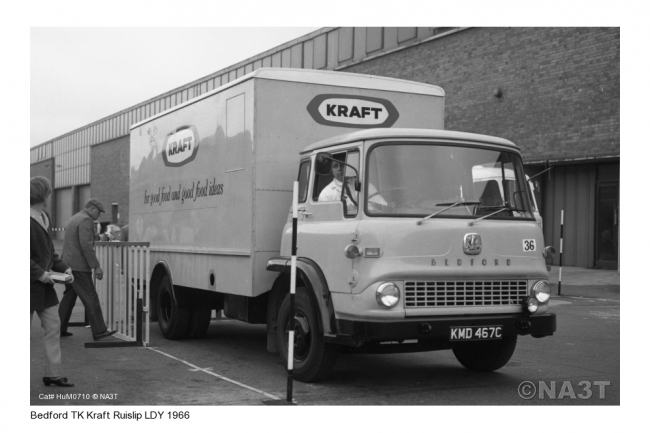
The next photo is of a similar vehicle in the Kraft livery, just a little older, with a different Bedford badge and sidelights.
Our trip was 1975, a fixed date for this truck / motorhome then!

The actual truck still with the outline of the Kraft logo, parked outside my home, Applecross, in Hatfield.
Sitting ready to be serviced, painted and transformed,
The before shot.
Then it naturally follows that there should be an after shot.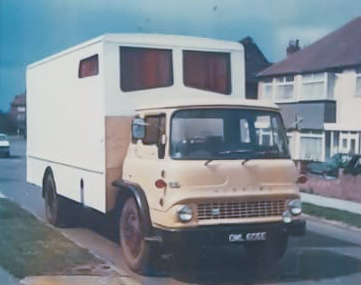
Paint to the box done, windows installed and curtains fitted. Also, an intercom to talk between the cab and the back.
The next photo l have of the Bedford is in Kathmandu, in the grounds of the Star Hotel, next door to the Kathmandu Guest House.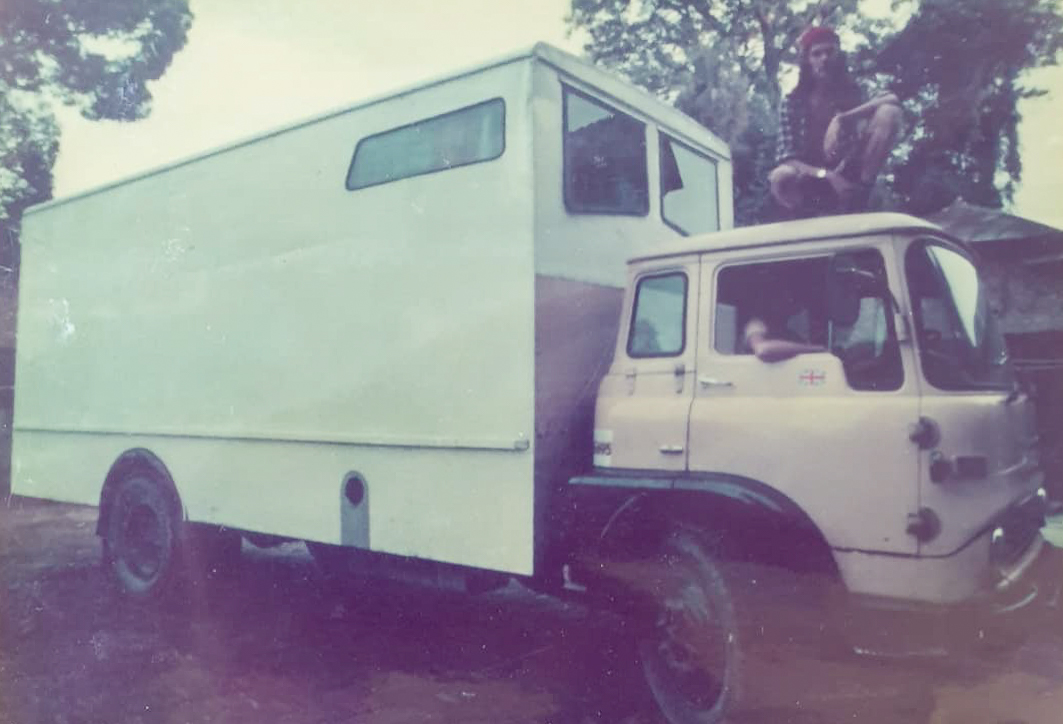
All the way from England to Nepal.
Pete on the cab roof and me at the wheel.
Photo taken and gifted by Martyn Dean.
After that, we sold her in Kathmandu for a King's Ransom and flew home.
My home at Percy Bilton
We flew back from Nepal and our trip ended in October 1975. I remember it well as it was just before my Grandfathers death on 10 October 1975. Before the trip to Asia I had worked for Percy Bilton Ltd, and the site we were working on prior to our departure was North Circular Road / Colney Hatch Lane Improvement. A Dual carriageway and creating a grade separated junction. On Monday 12 January 1976 I rejoined Percy Bilton Ltd at the same site. I continued to work with them until Friday 14 October 1977, albeit various locations. The year of our second Asia trip.
Not long after rejoining the NCR/ CHL Project I bought a coach with the intention of living in it on site whilst converting it to a motorhome. I drove it to site, parked under the trees, and that was my new home. It was a AEC Reliance, under floor mid-engined coach, probably a Burlingham Seagull.
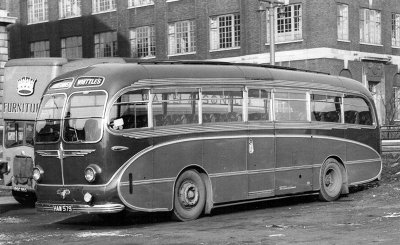
I found this comprehensive article about the Burlingham Seagull and this one about the AEC Reliance.
There are several articles about the coach builder especially as it was used on a number of different chassis.
Follow the link for a specific vehicle record for a AEC Reliance Burlingham Seagull. It is a Mark 2 and I don't recall which mine was. They are both fairly similar as can be seen from the two photos. 
Whichever it was, this coach was the most successful motorhome conversion I ever did.
I lived in it on site. We moved site and it came with me and I lived in it again, this time at Hunton Bridge, another road construction site improving the junction between the A41 and A405. I had visitors to stay and at least once when for a long weekend away.
It had a bedroom, shower, toilet, lounge, kitchen, dining table, and was mobile as well. Read the full article about mine.
A lot of the furnishings were from Fenwick in the nearby Brent Cross Shopping Centre. So handy to have such a new concept to the UK so close to the NCR / CHL site, with opening hours which allowed me to go there in the evenings, after work.
When I left Percy Bilton to go travelling again, I drove it up to East Dereham and put it in storage there.
It was still there when I was eventually done with travelling for a while. I kept it for a while longer before visiting it, to strip some mementos, and the giving it to the landowner.
Bluebell and the Ford D
A Bedford coach we called Bluebell. Again not so much of a motorhome as it was primarily a mode of transport to go travelling again. More comfortable than the Bedford TK that we did the first Asia trip in. Strangely, as motorhomes go, this was split in two, as the kitchen was in the crewcab of the Ford D Series.
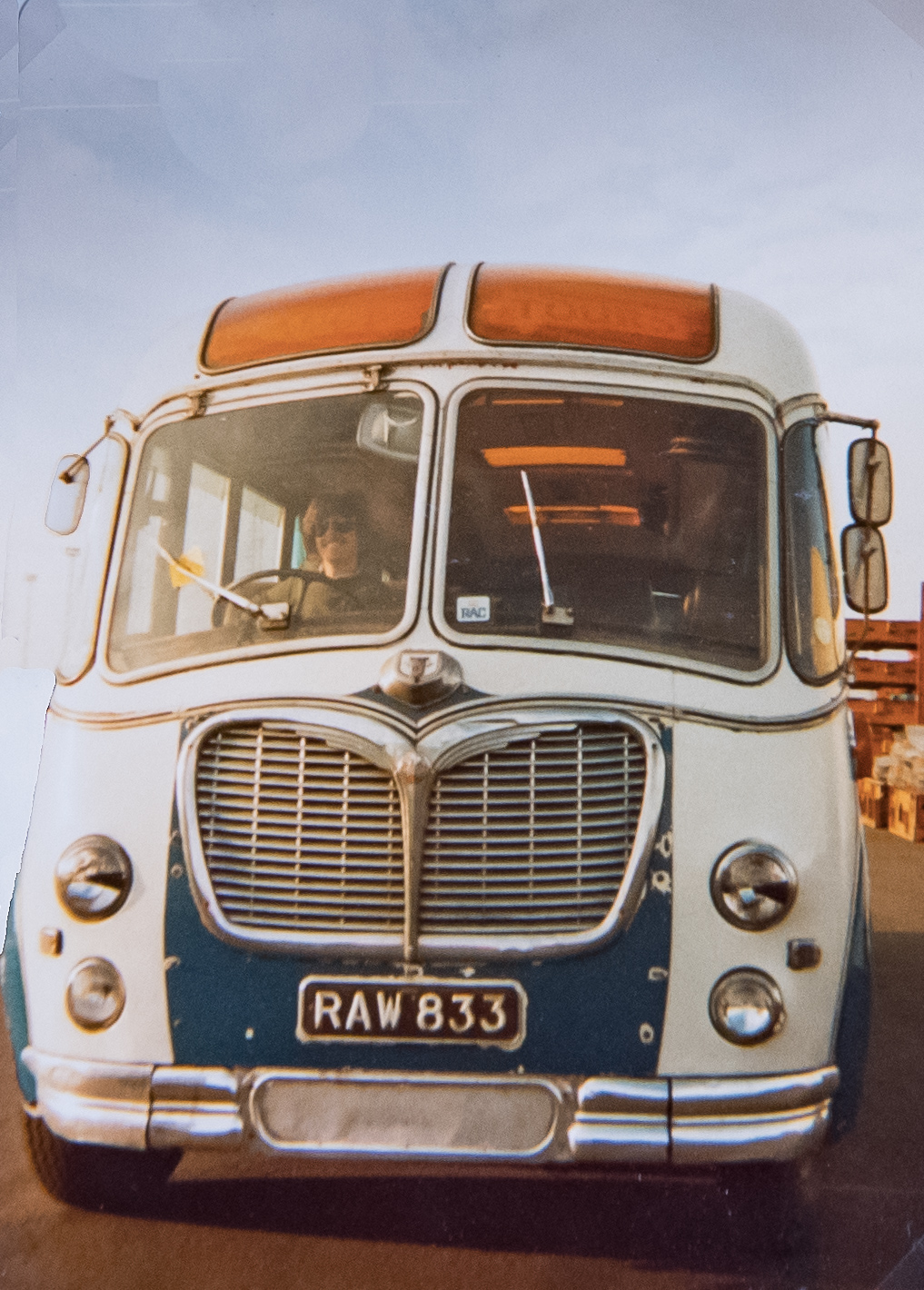
The following photos were from the eastbound leg of or Asia Trip 1977. We took two out, intending to sell both, but eventually sold the Ford and returned with Bluebell.
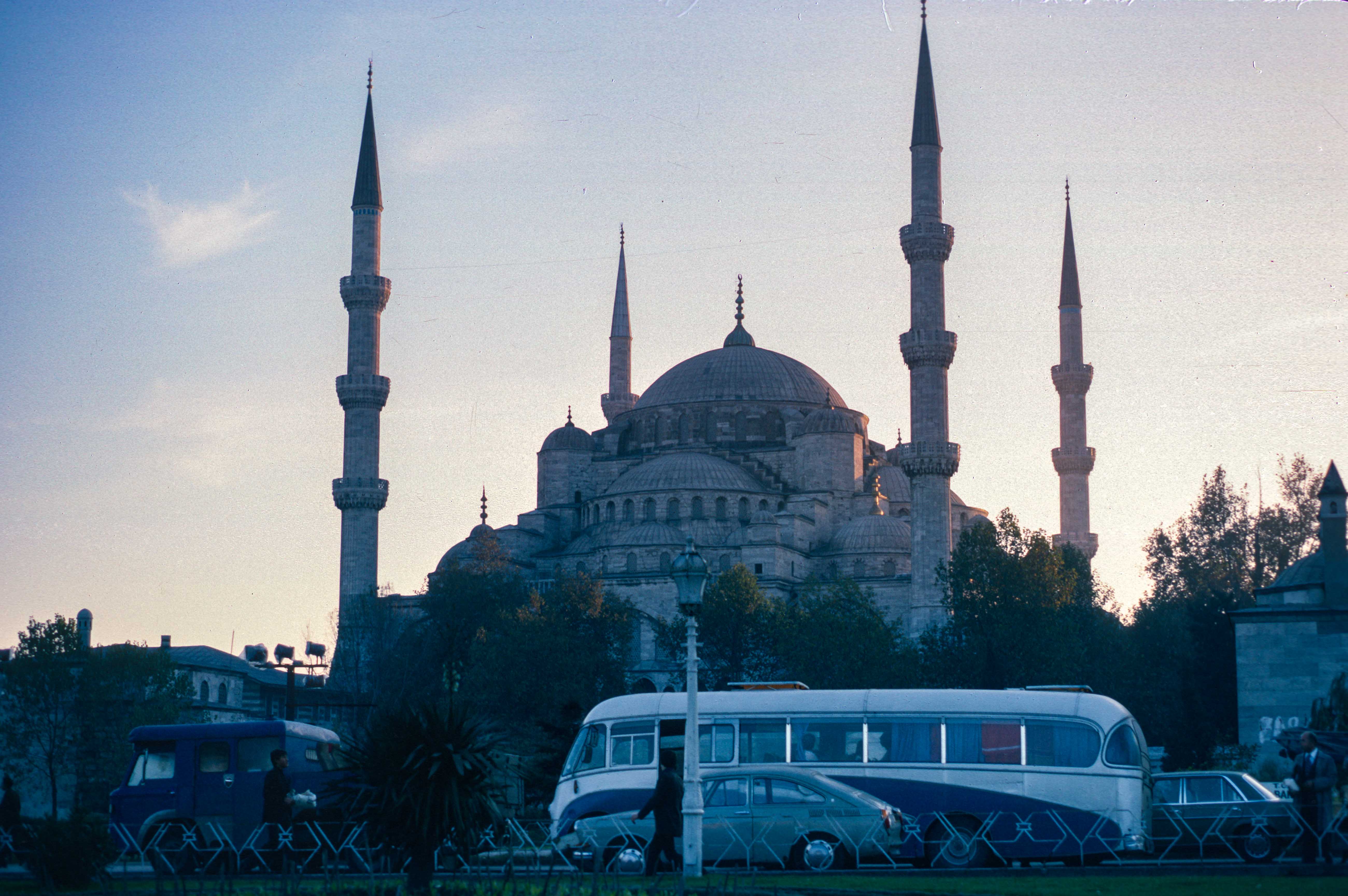
Bluebell at Felixstowe docks on the day of departure
Bluebell and the Ford D Series parked up for the night outside the Blue Mosque in Istanbul, Turkey. Still in Europe, but at the door of Asia.
Our convoy through the Desert of Death, Afghanistan, stopped under a clear night sky and after breakfast paused for a group photo. Bluebell and the Ford D at the end.
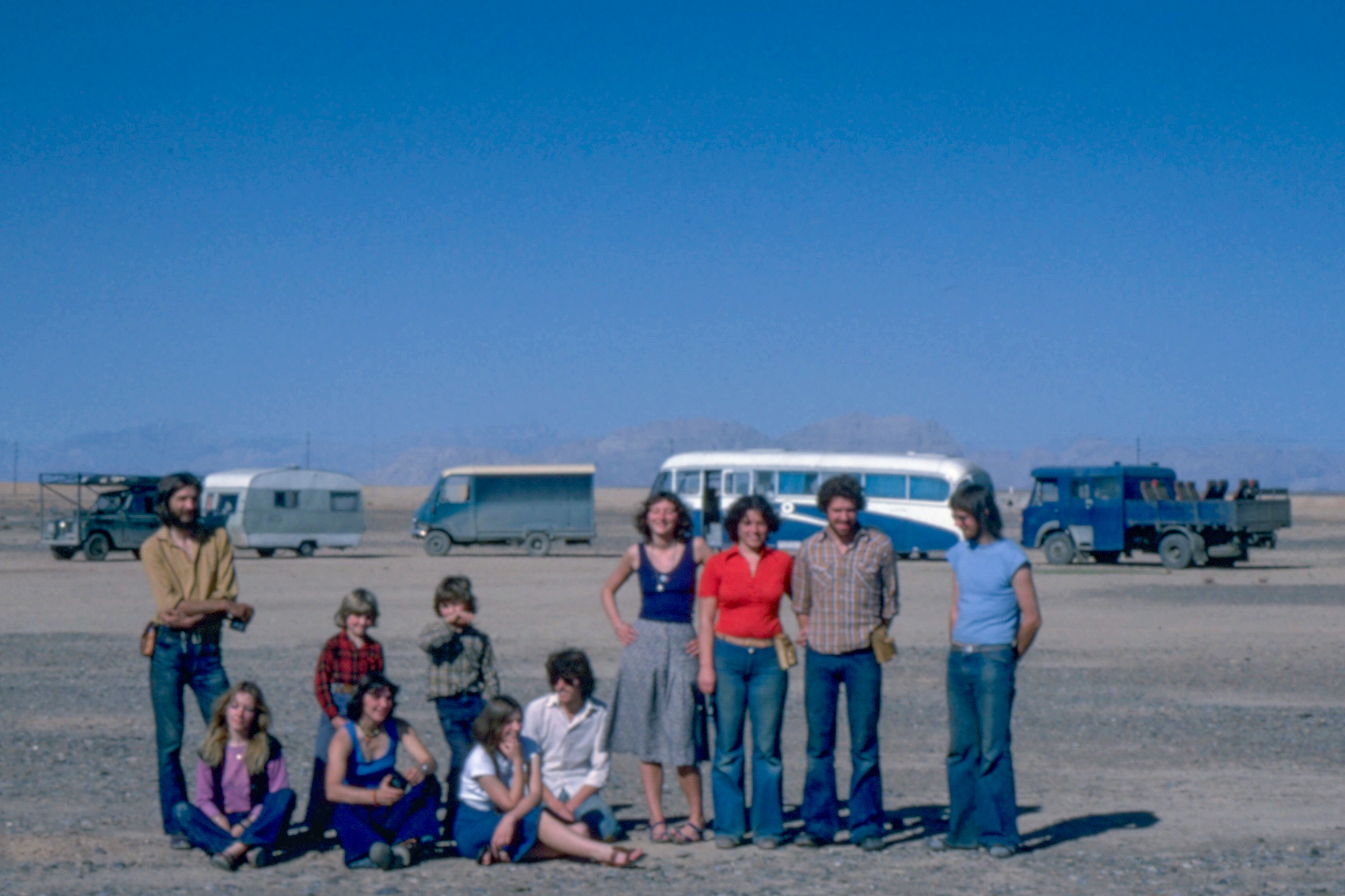
Bluebell was sold on our return, and I continued to travel, whilst the AEC was still in storage.
The Library Van
Another work related link. I started to work for Norwest Holst on the River Mole Flood Alleviation Scheme in Esher in April 1986. I moved the static caravan / mobile home (not motor) that I had bought for the Barking A406 North Circular Road, NCR new road with Cementation Construction Ltd, whilst living in Ipswich. Set up home in Esher for a while, near the posh houses. Eventually we found somewhere we could afford, and made the housing leap from Suffolk to Surrey. The initial letter of "S" was pretty much the extent of the similarity. Especially with respect to house prices. That is when we moved to Epsom, the first place we found somewhere where the town had actual green space all the way around.
The River Mole finished and I was back into commuting, first to the Channel Tunnel site near Folkestone and then to the Brooks Shopping Centre site in Winchester. Although the Channel Tunnel was further the overall site had very strict locked gate policy, which meant I was always kicked out and home at a reasonable hour. The Brooks did not afford this luxury. After some time of commuting either to Winchester or on into Southampton, I saw a Bedford RL parked up between Romsey and Winchester. It had been converted to a motorhome. Here we go again. After about ten years abstinence, the thought of motorhomes came back to the fore.
My daily commute to from was made less stressful by not thinking about work, but about motorhomes instead.
Would it be a good idea to get a Bedford RL and convert it, or buy one already converted? There were lots of reasons for me that made a RL conversion low on the list. It's age, lack of power, fixed cab, no integration between cab and body. The real clincher was the fact that it had a relatively lightweight suspension and a flexible chassis. End result, on rough ground not only does the wheels move up and down to accommodate the terrain, so does the chassis. One of the thoughts to resolve the separate cab to body issue, was to replace it with a box van coachwork to integrate the two. With a flexible chassis the box would have to be rigid, walls, cupboards, showers, etc, could not flex in the same way with ripping itself apart. Solution, another full suspension between the chassis and the box in addition to the normal one between the wheels and axles, or undercarriage, and the chassis. This seemed a bit radicle at the time, before truck cap suspension became commonplace. How to you get all the controls floating in the box down to the ordinary chassis. Such as steering, breke, accelerator, and clutch. Just the important stuff. I mused that thought for a long time after I had supposedly discarded it.
At some point, probably 1989 or thereabouts, I saw a Mobile Library for sale, near Heathrow.
Wendy and I looked it over and we bought it. A big stress toy. Not the squeeze ball that you can fit in your hand. Something a little bigger. Something I can really get my teeth into, whilst driving. Don't worry I was not drawing at the same time as driving. The route was familiar and the traffic relatively light, being in the opposite direction to the normal flow. No mobile phone to distract me. So I had sufficient capacity to drive well and think about the motorhome design. Indeed it was less distracting than spending the time thinking about work, the day to come or the one left behind.
It lived in my parents garden in Romsey for a while, and passed its MOT when due.
Another change of job, this time back to Cementation or Trafalgar House for the group name. This time with Cementation Projects Ltd, part of Trafalgar House Construction (Major Projects) Ltd starting on 1st February 1991. The Resident Engineer for British Rail was also interested in motorhomes. I moved the Library Van from Romsey to the site at Stonebridge Park, which is a story on its own, and worked on it there some lunchtimes and the occasional evenings, before heading home to Epsom.
Not living in it, make progress slower than the AEC. There was however, still some progress. At the end of the site, I drove the Library Van to the local MOT station, where again it passed, and then on to a farm where I had arranged for it to be stored.
It went downhill from there.
To dive to it to work on it was generally over an hour from home on a weekend.
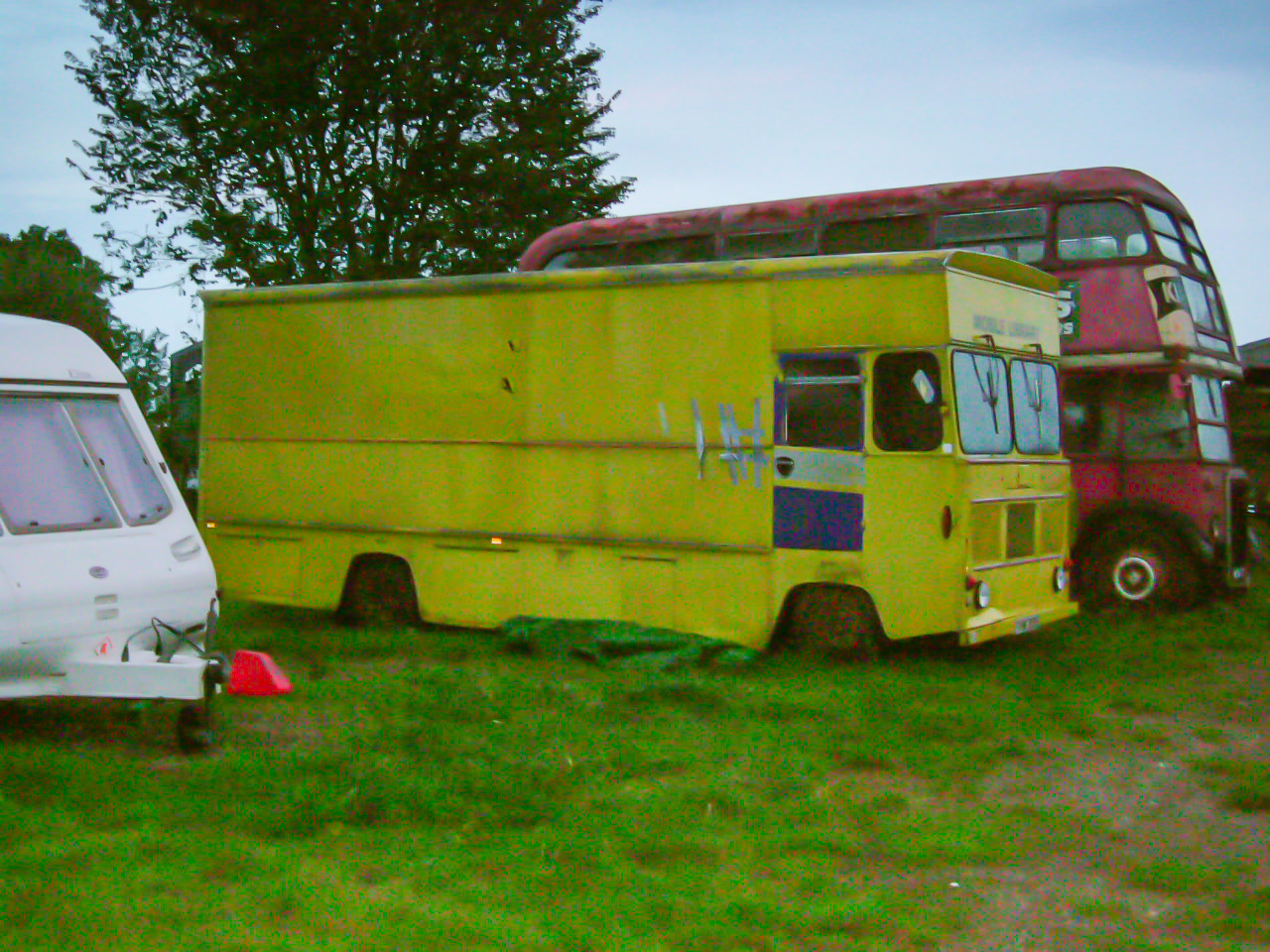
It did not get the attention it deserved.
The Bedford PJK library van already looking a little sad in storage at the pig farm.
It was quite close to the new HQ of Trafalgar House after it moved from Mitcham to Maple Cross, but not the thing you could do wearing a suit.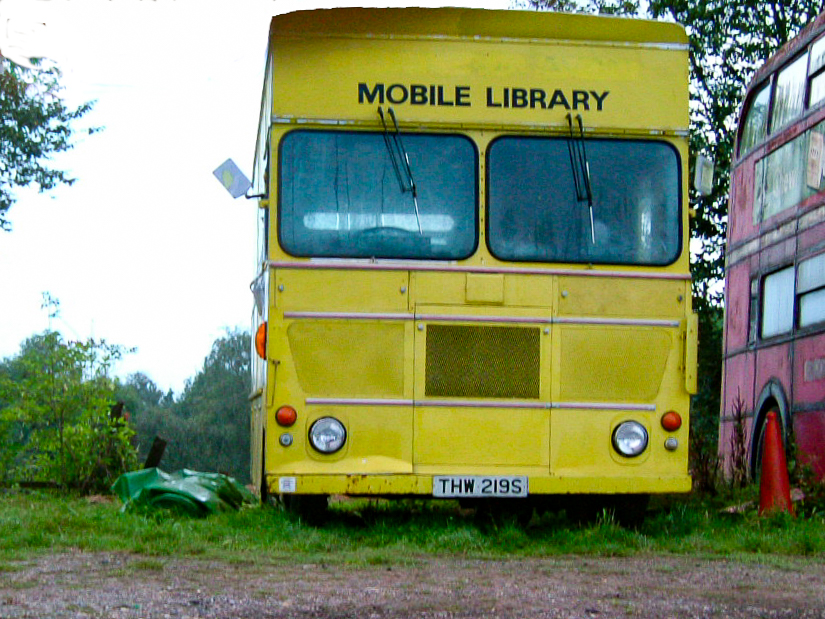
The side view shows the door painted in the proposed new livery. Dark blue with a grey strip, partly so that it was less evedent when rough parking on a hilside at night.
David was in the St John's Ambulance as a cadet and was enjoying it. One of the leaders also drove Ambulances for the NHS and others. Some of them were based at Dunsfold Aerodrome. Introductions and conversations took place and suddenly doors were opened and the Library van was on the move again. Not under its own steam this time. I had to hire a low loader, local to the farm.
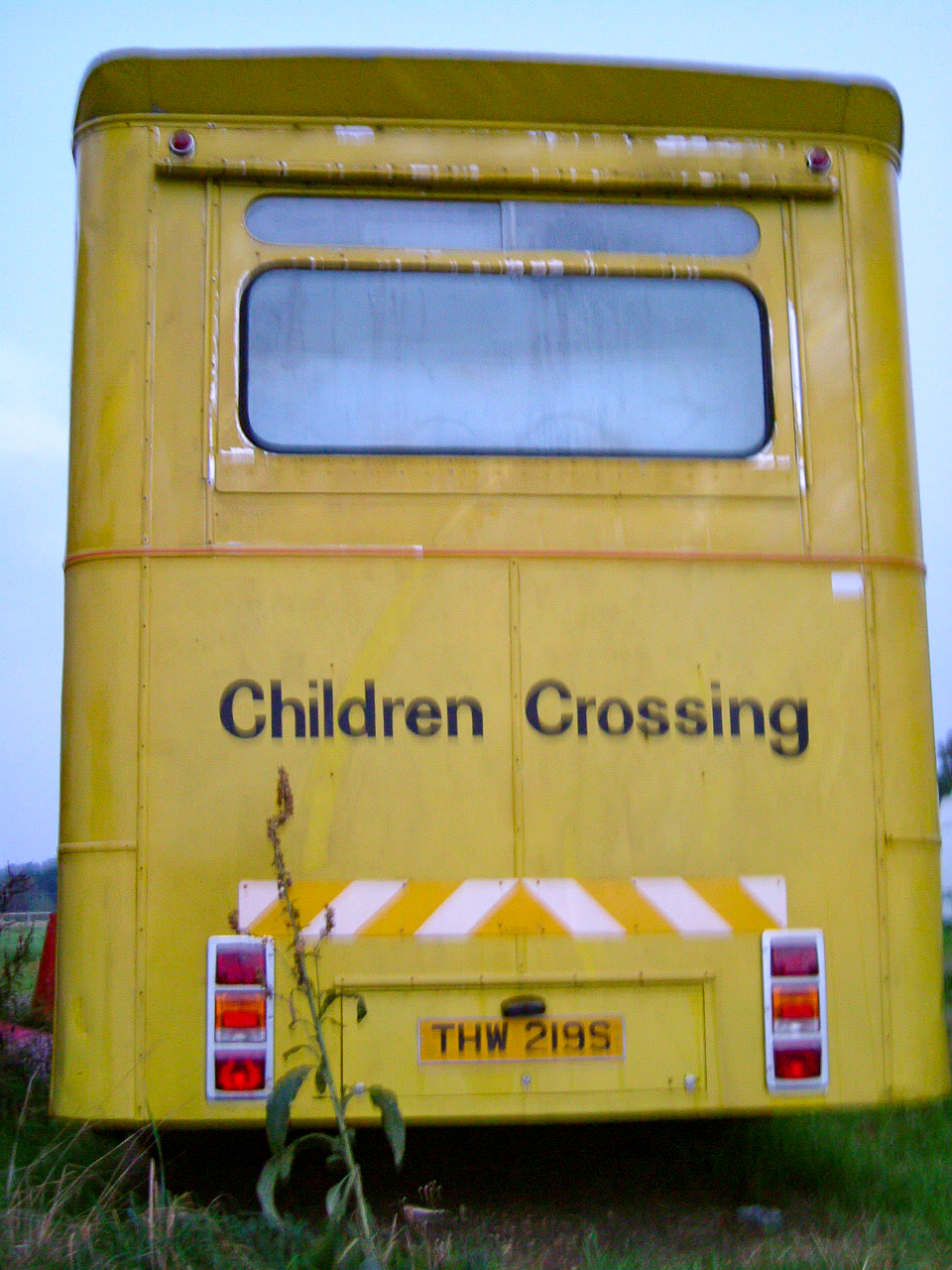
In the time it had stood there, us paying for storage, the owners had not seen us for a while and decided it was in the way where it was, so relocated it, with a tractor. Into a hedgerow.
It looked even sadder then. Sunk down to its skirts.
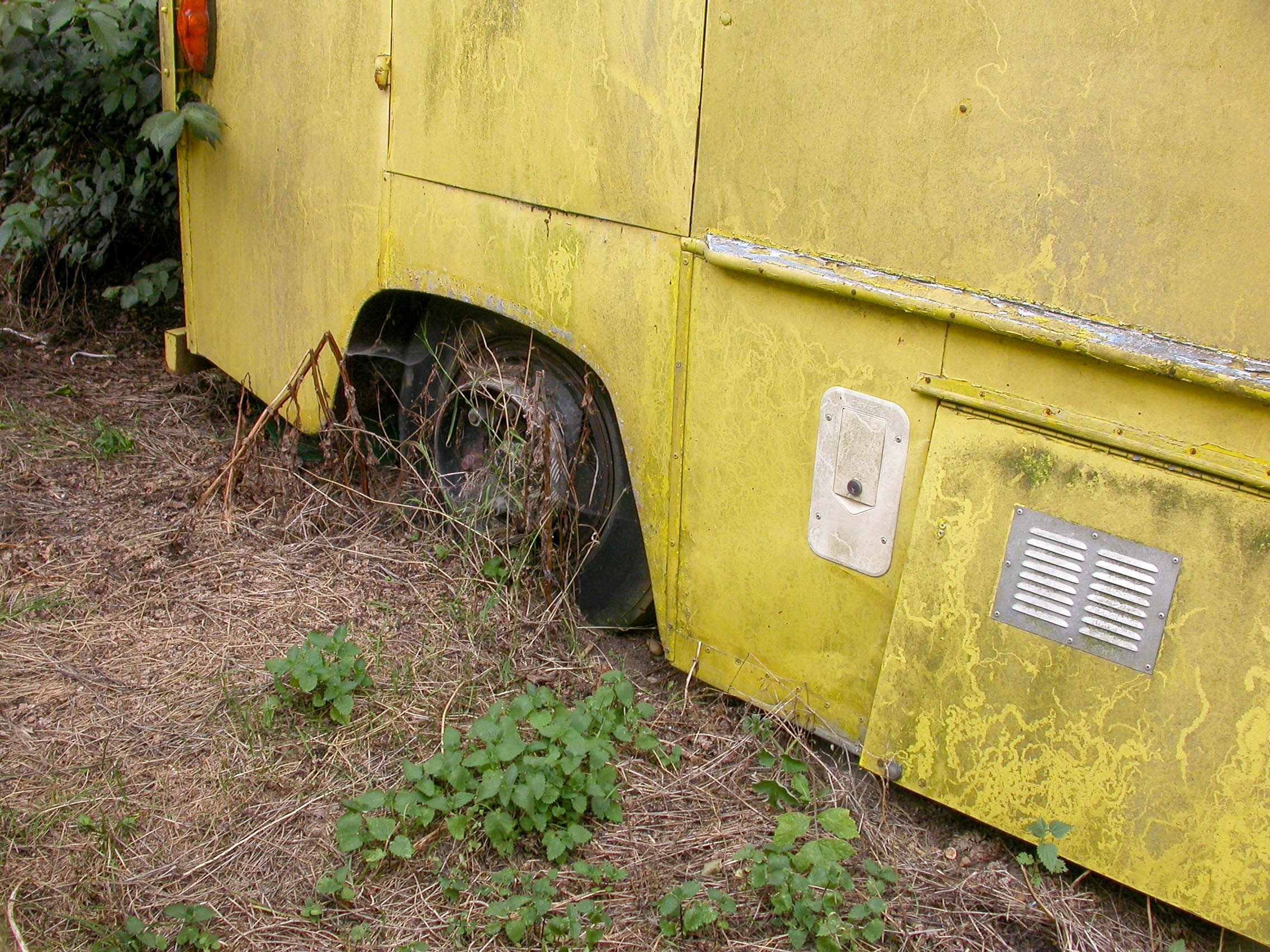
Not the end of its story yet, but the rot had set in being pulled and pushed into the hedgerow and left.
And now for something completely different.
Alvis Stalwart
Another childhood thing. I still have the matchbox toy of a Stalwart. I even found a company that changed the Rolls Royce petrol (multi fuel) engine for a diesel. A F Budge, in East Retford. The family had lots of interests including RJB Mining and Retford Gamston Airport. I visited that airport to talk to them about the diesel conversion that they were working on. The army had recently disposed of a lot of its Rhine Army 'Stollys' and Budge had had a field day buying up stock. There was a field full of Mark 1 and Mark 2s, some with cranes. This vast array formed part of the Budge Collection which became quite well known.
6x6, Alvis Stalwart, amphibious military truck, High Mobility Load Carrier (HMLC)
This photo is one of many about the War & Peace show to be found at Army Recognition - War and Peace Show 2006. It looks as if these were the old photo galleries attached to the then War & Peace Show website, but I can't be certain about that.
The photo is not one of mine but I think it is the same vehicle where you can see my arms and knees, as I sit in the driver's seat, below. The view is from above the cab through one of the twin main doors. You can see from the side view that there are no convential doors on the cab so as to maintain watertightness. My recollection is that it is a central steering wheel position on both the Mark 1 and 2. Giving good forward visibility, but a little challenged to the rear.
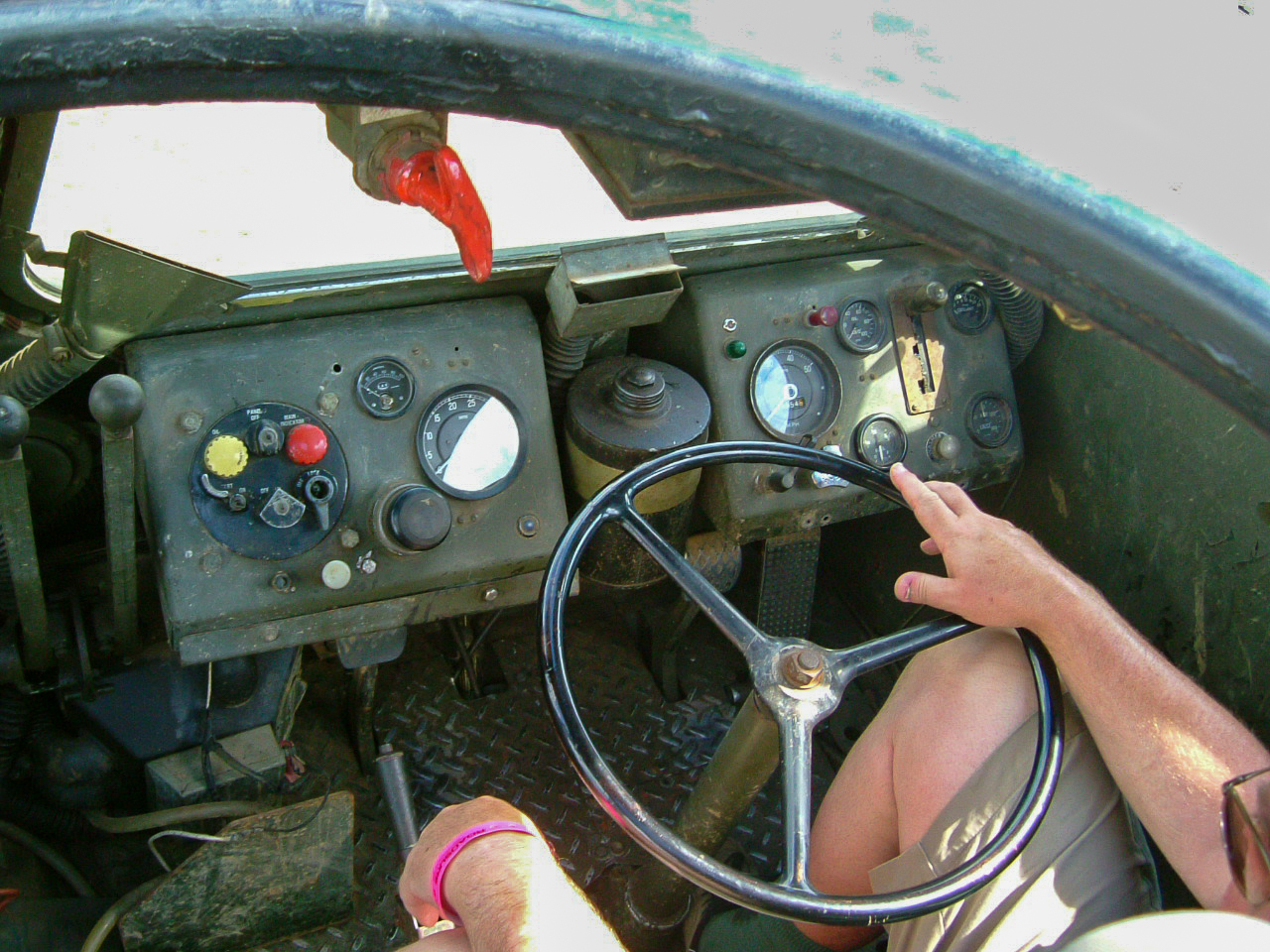
We also lifted the load floor to look at the engine.
Part of the benefit of the Alvis Stalwart is that it is designed specifically for the purpose, unlike the American DUCK which is a truck given a hull. The hull on the Alvis Stalwart is an integral part. The engine and most of the mechanicals sit within the hull to maintain a low centre of gravity. The hull provides most of the buoyancy whilst swimming and the seals to the dropsides restrict erroneous water ingress. The load is therefore above the engine and mechanisms such as transmission and water jets. If you have a breakdown with a load, you have extra problems. So the design is both beneficial and detrimental. However, in the context of its primary use as a support for tanks, bringing ammunition and fuel, where there would be a fleet or squadron, or whatever the correct collective noun is. A unit would include a number of cargo trucks accompanied by one, or more, with a crane. Hence the problem is resolved by mutual support. From flat tyre to blown engine, other trucks could deal with the cargo and the rescue, or abandonment.
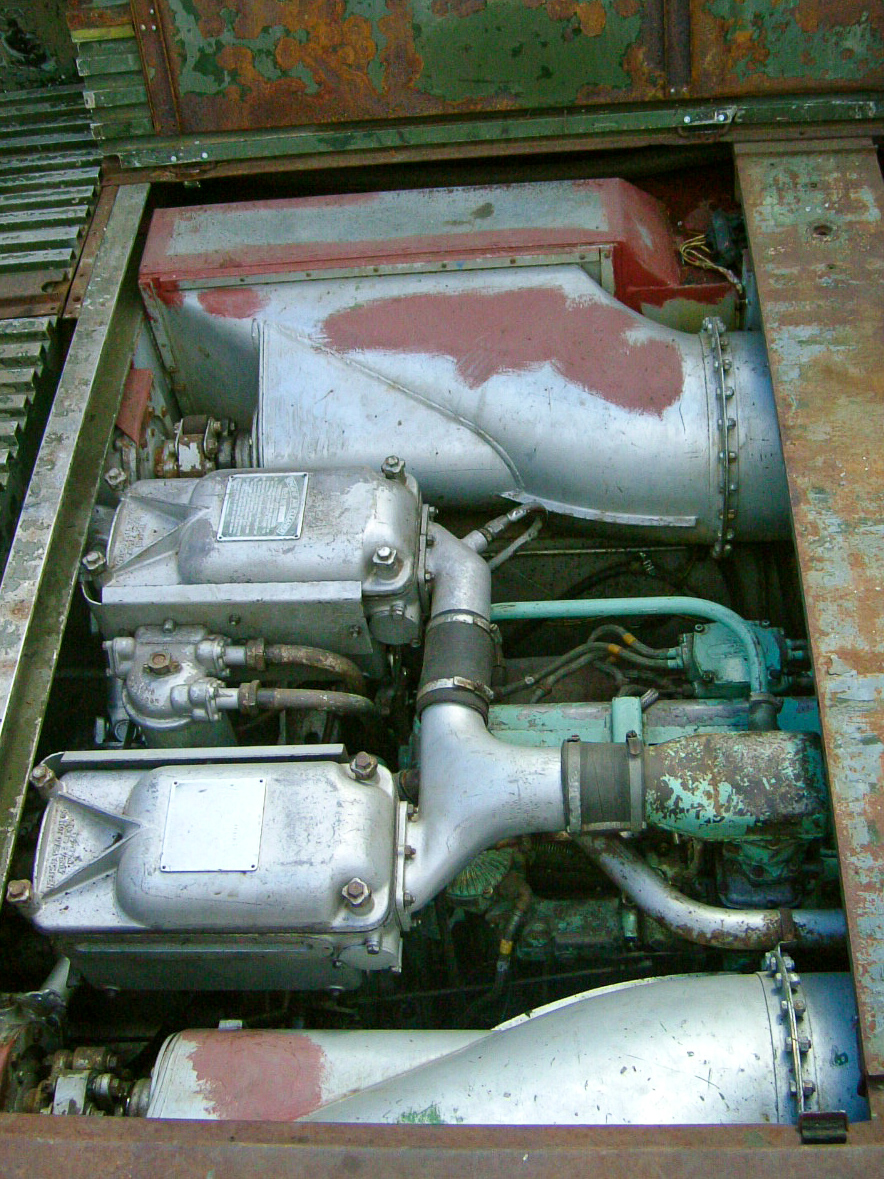
The accessibility of the engine and transmission was not the only problem though. The Stalwart was 6x6. Permanent 6x6, without inter axle differentials. According to rumor the squaddies driving these along the autobahns in Germany had to hit the kerb, hard, every 50 miles or so. Lifting one side off the ground momentary thereby allowing the wheels and transmission to unwind, relieving the build up of the stresses of fixed axles. This of course was never a problem on fields and mud as that would allow sufficient slip. Long distances on roads was the problem. So again, not a problem in the envisaged use.
The real clincher preventing normal private use on the road was the width, 2.62 m (8 ft 7 in). It was just millimeters over width of maximum, Construction and Use Regulations, (was 8ft, then amended to 2.55m) by the wheel hubs and the capstans. Even taking off the capstans and replacing with a plate would not bring it into compliance.
Ignoring the last, perhaps hoping that the maximum width might change in the future, the usefulness as a potential motorhome was questionable due to the engine access. However, linking two of them together in tandem with the towed portion having the accomodation and the first, with a crane and an equipment box, workshop, could provide both the original high mobility and swimming. Not really that practical. Which way around for the trailer? Perhaps windscreen to the rear. Another thought could be to link the two transmisions to make it a powered trailer, hence a 12x12. Articulate the joint between the two similar to a BZ206 or an articulated dump truck, as found on site. Another thought was to put dog-clutches in the transmission to make it a 2x6 for road use and then engage the dog-clutches for 6x6 use. Found this useful technical site about Stollys, FV622.
So, back to the chronology and Retford Gamston Airport with Budge. I was with the Resident Engineer from the Stonebridge Park job. Following the conversation about the diesel conversion we were offered to drive one around their test track, which of course was dirt,mud and rough ground. The most exciting part of that drive was going up a 45deg slope. Enough wellie to climb the hill, just looking into the sky. No ability to see the ground, but it was a delicate balance, as just as you summited the hill, you have to take the power off to let the front fall back to the ground, before it started to fly. It was a fun drive.
The Resident Engineer (RE) was impressed with the vehicle and we were unaware of the width difficulty at the time.
The next encounter was after he had applied for and obtained a licence to buy and trade in tanks from the MOD following relevant security checks. The Stalwart was used in support of tanks and was therefore in the same armored units. Hence the restrictions on buying and selling tanks was applied to Stalwarts as well.
The was an official arms dealer.
Having the appropriate clearance he was allowed to approach MOD disposals. At that time the exclusive arrangement with Witham Specialist Vehicles Ltd was not yet in place, so direct sales were still OK.
We were given an appointment to visit an Army base on Salisbury Plain. We arrived at the gate and told to park the car at the side. An officer arrived and to us to the CO. We were being given the VIP treatment. Our transport to the a valley the other side of the base was to be an articulated personel carrier, something like this.
I think we were in the back with the officer, away from the noise of the engine. It took a little while to get to our destination, and in some areas, it was a good job we had tracks. A very capable piece of kit, which can be seen performing here, and here in Australian.
Well if we are going to have some videos of the BV206 we most certainly require some of the Stalwarts, starting here, then a long one with plenty of detail, and a couple of swimmers. An explanation of wheel windup. Another swimmer but at speed, and some old Pathe test footage. Finally, an insight from somebody who knew them in service.
The Stalwarts were a sorry state to see, when we got there. Our impression did not improve when we looked around them in detail. None of them were swimmers, (Still with all the amphibious equipment on board and functioning).
At this point the RE and I heard different things from the same words. "I'll get some bodies to tidy it up a bit" and "I know somebody in Colchester who has some swimming bits". I think there was a degree of connection as the RE was a private buyer with a real vision for continued use, including on canals. Not just another commercial opportunity. My take was that the tidy up would be a training project. The potential end result could have been a very nicely refurbished, fully functional swimming Stalwart. The RE interpreted it as minimal cosmetic tidying without any commitment.
However, it all became somewhat mute after we found out that DVLC was only issuing registrations to Stalwart as an agricultural vehicle with limited mileage. This is also when we found out about the width issue. The project died as it could no long meet the vision. The RE eventually bought a Forward Control 101 Land Rover from Richard Branson. It had been used as a support truck to his personal Hot Air Balloon activities.
The Land Rover was brought to site and sat beside my Mobile Library Van and sometimes we worked on them together. It was a good working relationship, with a common interest.
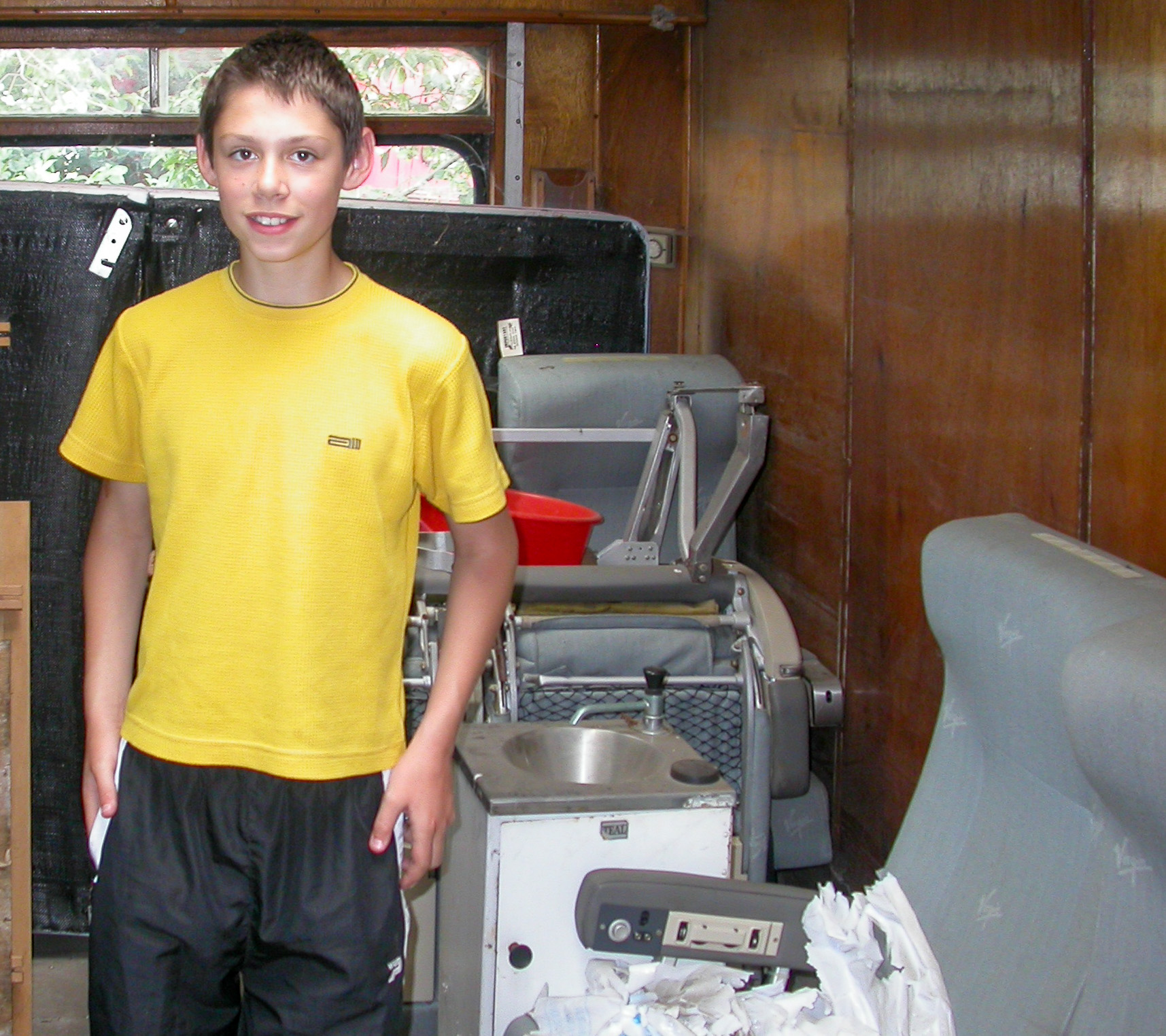 The association with Richard Branson explains the reason why mine had some sets of Virgin Atlantic aircraft cabin seats inside it waiting to be fixed in place.
The association with Richard Branson explains the reason why mine had some sets of Virgin Atlantic aircraft cabin seats inside it waiting to be fixed in place.
Photo of David inside the Van, with the seats in view, as we prepared to move it away from the pig farm.
Watching the various videos whilst researching and writing this article it became clear that the Stalwart is very much a big, big boys toy, with little inherent functionality. Fuel consumption between 5 mpg and 5 gallons per mile, depending on use, together with the heavy maintenance commitments suggest it is a wealthy big, big boys toy, but provides a lot of fun for those who partake.
Another go on a Stalwart whilst at a Tank driving experience. As a passenger in the back. Lots of mud and very large puddles / ponds, but not swimming. Great fun, but the tank driving was the real treat. Exceptional.
You can see that I still like the Stalwart from this article, but no longer want to own a real one, the matchbox one will suffice.
Tatra 813
This dream is much more about the go anywhere in any conditions, apart of course, swimming like the Stalwart. Such an impresive capability. Truly High Mobility.
And somebody has taken that to fruition and created this wonderful motorhome, going through its paces in Agadir Morocco with Reda Taoujni.
8x8 Tatra truck is off-road king.
Another 8x8 Tatra truck is off-road king.
Tatra performing at its limits and sometimes beyond, in various trials.
Tatra 10x10 in Siberia, in the snow.
TATRA BUGGYRA RACING on DAKAR 2019 - BEST OF!!! - Another form of extreme, but not 8x8.
I have never owned a Tatra, or driven one on an expedition. A Tatra 8x8 Kolos (Colossus) was definitely on the wish list at one time. Either as a toy or a all terrain motorhome. I even visited a place in Lancashire that imported them, but at that time they were rust buckets, waiting in a field somewhere in Europe, waiting to be imported. I also was interested enough to have an email conversation with Christain of Miltrans Military Vehicle Brokers in 2005, before the War and Peace Show.
The prime reason for this exceptional performance, from what I understand, is the tubular chassis with high articulation fully independent suspension.
I think you will agree that the clips show it as being rugged, and all terrain. However, I sat in one at a later War and Peace Show. Even with additional sound suppression, it was still deafening inside the cab. This effectively took it off the wish list
Three into one!
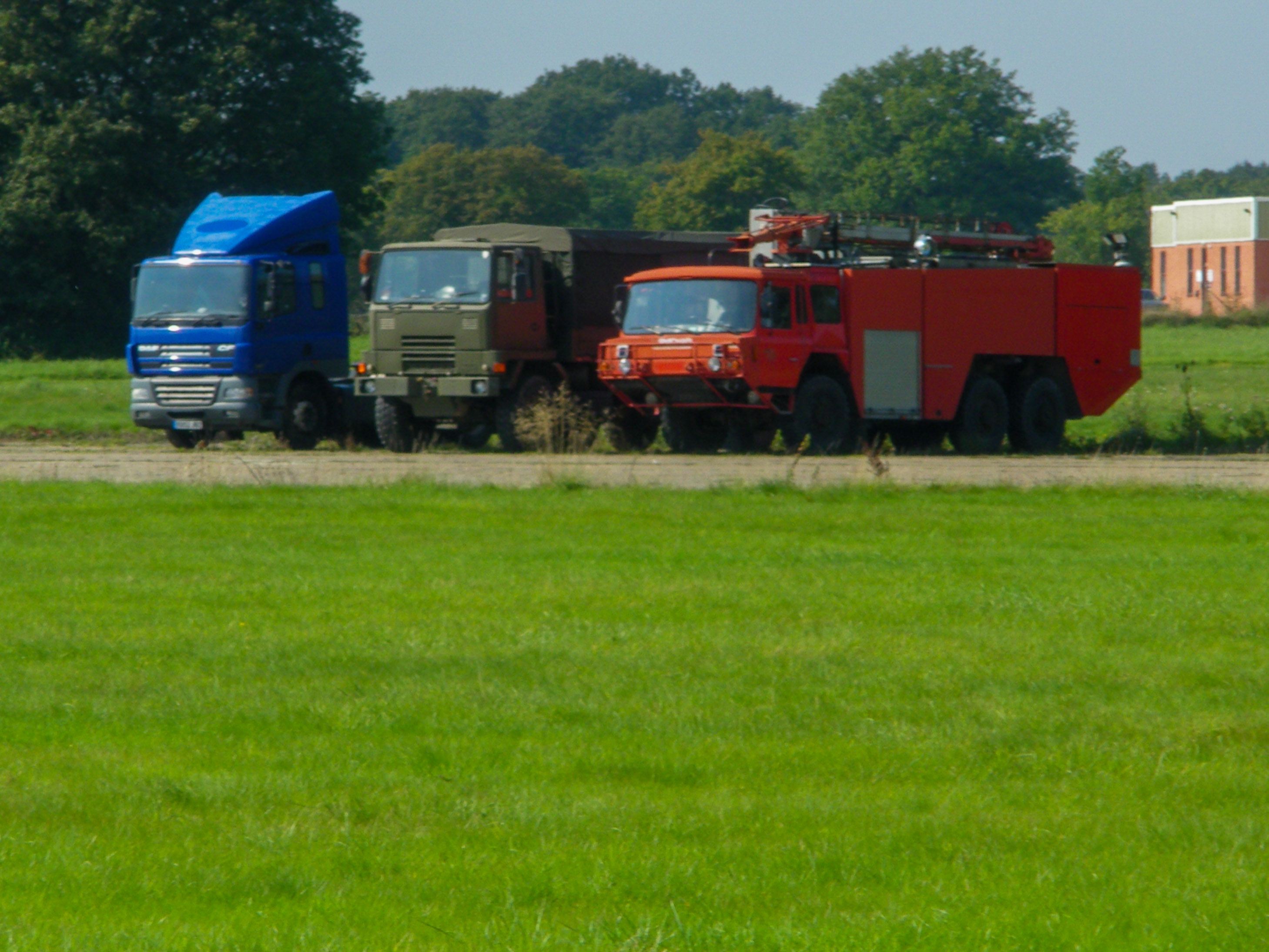
Well, not these three trucks. Imagine the blue one being replaced by the yellow Mobile Library Van. There was a time when all three were parked together at Dunsfold.

This photo was taken on the 21 July 2007 when both the Mark 12A and the Bedford TM went away for a dirty weekend together. Here the Mark 12A is already on the low loader, about to leave for a very muddy War and Peace Show. The low loader stopped on the way to put fuel in the Mark 12A, and again for the TM on the trip to take it to the show.
The Mobile Library was not military and therefore was not invited. It could not go the the ball, and had to stay home and sulk.
The two came back covered in mud, but that is a different story.
We are getting ahead of ourselves. Outings aside, was there a plan?
What was the plan.
Get the TM roadworthy and tested. The mobility would be beneficial for all the other activities.
Once it was sorted and allowed on the road, we could get a few miles on the road to get a feel for it, and ensure the there were no lurking problems waiting to pop up. If all OK, the next stage was to do with the the Library. Drop the engine and gearbox out and put it aside. Perhaps to use later as auxiliary engine, generator, or winch. Remove the propshaft and the rest of the transmission.
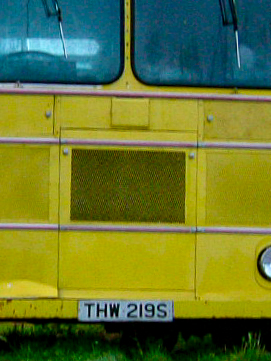
Then strip the back of the TM down to a flat bed. Mount the Library onto the back of the TM, but not yet tight to the bulkhead. Remove the engine cover, which is between the front seats. Remove the front panel / grill, as seen in the photo. That would provide part of a crawl space. Probably remove the headlights and front bumper. That would provide the measurements and position for cutting through the bulkhead and the back of the cab to allow the creation of the remainder of the crawl space. It would have to be flexible and removable to allow differential movements whilst in motion, and the cab to tilt for maintenance.
The rationale behind leaving the axles on the Library was also to do with differential movements. Having the living box on a full suspension, isolating it from the movement of the truck chassis over the challenges of rough terrain due to the designed flexibility, to provide greatest wheel contact, and therefore traction. A box construction direct onto the chassis and the cupboards therein would not last long, without significant strengthening, and therefore an increase in weight and a decrease in space. A better solution is for the box to be sprung, and the easiest and most effective way with the Library is with its existing axles, leaf springs, and dampers. The next question is whether to leave the tyres and wheels on, or not. Probably not, as stood tyres do not fair well, and without, there would be a reduction in overall height, which would be beneficial. Then fabricate brackets for each wheel fixing to the wheel nuts, against the brake drums, and fixed through the flatbed and into firm subframe. The weight of the Library taken through the blocked axels and the lateral movments controled by the brackets.
The Mark 12A would be striped for useful parts such as the lighting mast, access platform, search light, lockers, electrical equipment, and batteries. Together with anything else that was useful.
The plan fell apart
The Library Van had suffered. Some of the seems had split, possibly at the pig farm. Water had found its way in. The interior roof sagged, but the real death knowl was that the wooden frame of the cab had started to drop. It was begining to get a Concorde nose. Wood rot had set in. It could be repaired by a full strip back and reconstruction. That solution was discounted. Overall, the condition had deteriorated too far for it to be viable.
The Library Van was scrapped
The end of the Mobile Library Van story as a potential motorhome.
We had also found out that the Carmichael Mark 12A was a unique vehicle and should be restored, not used for its useful bits. Its story starts here.
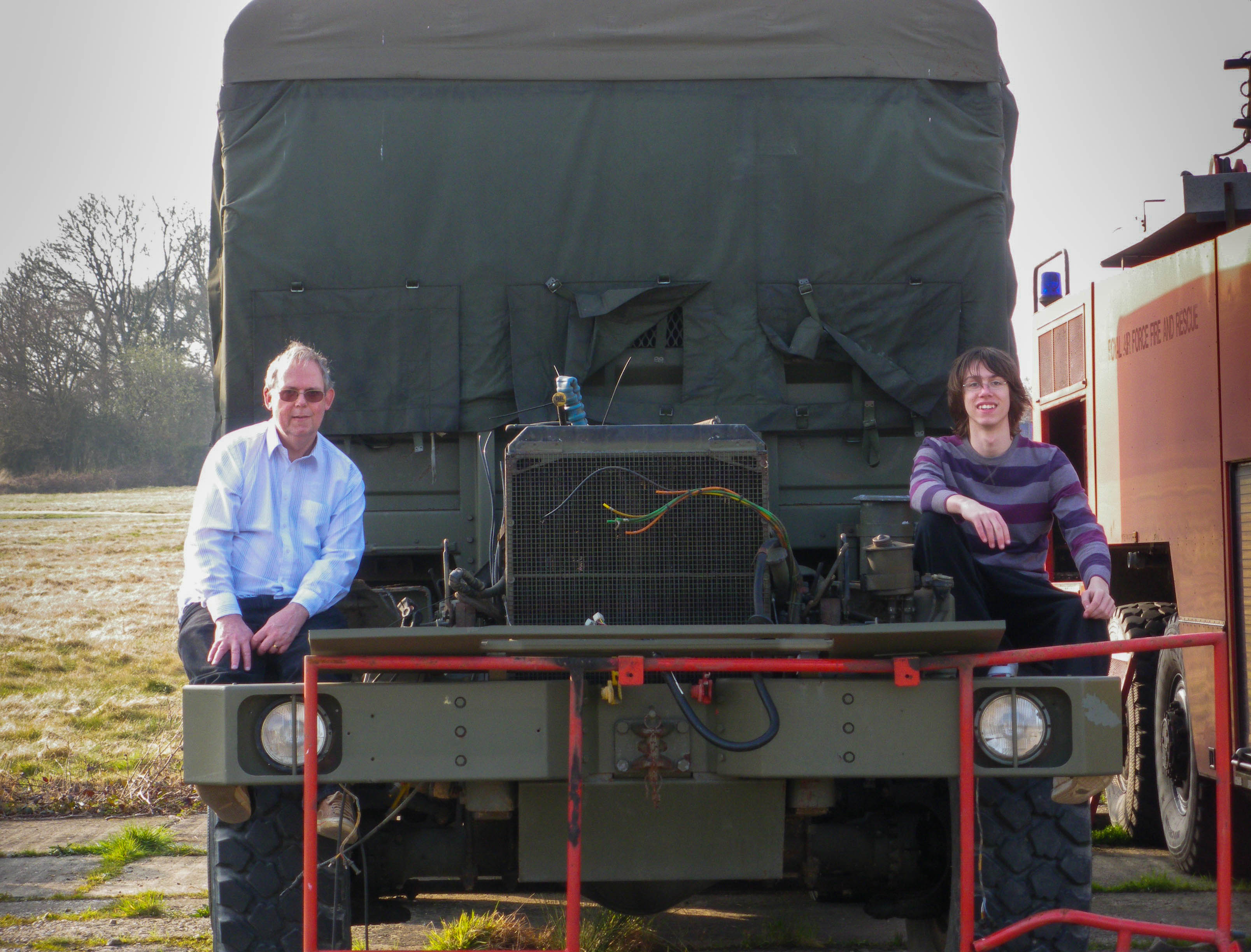
In 2009 this photo shows that the cab was removed from the TM and taken to a local metalworker. He cut out all the rust, whether identified by Witham Specialist Vehicles Ltd or not, and welded in replacements. He also repainted the cab.
The welding was well done.
A previous website of mine recorded that part of the restoration. I received an email telling me that photos were helping him with his restoration. I was very happy that it proved useful.
The cab was reinstated.
Both the TM and the Mark 12A were serviced with all fluids and filters changed. The volumes of fuilds required were impressive. An example, gallons of neet concentrated antifreeze required, before dilution.
A foggy day in October 2012. The paint on the TM cab had gone off and it needed T-cutting and a respray.
I had been approached, regarding the possibility of selling it. This visit was to prepare for the emptying of the back, which was the workshop for the Mark 12A. Ready for the TM to be taken away.
That just left the Mark 12A, but that was no longer part of the motorhome story.
The Mark 12A has now gone to a better place. The Museum of RAF Firefighting. It is being restored and preserved properly.
So ended, going on for four decades, of my motorhomes history.
